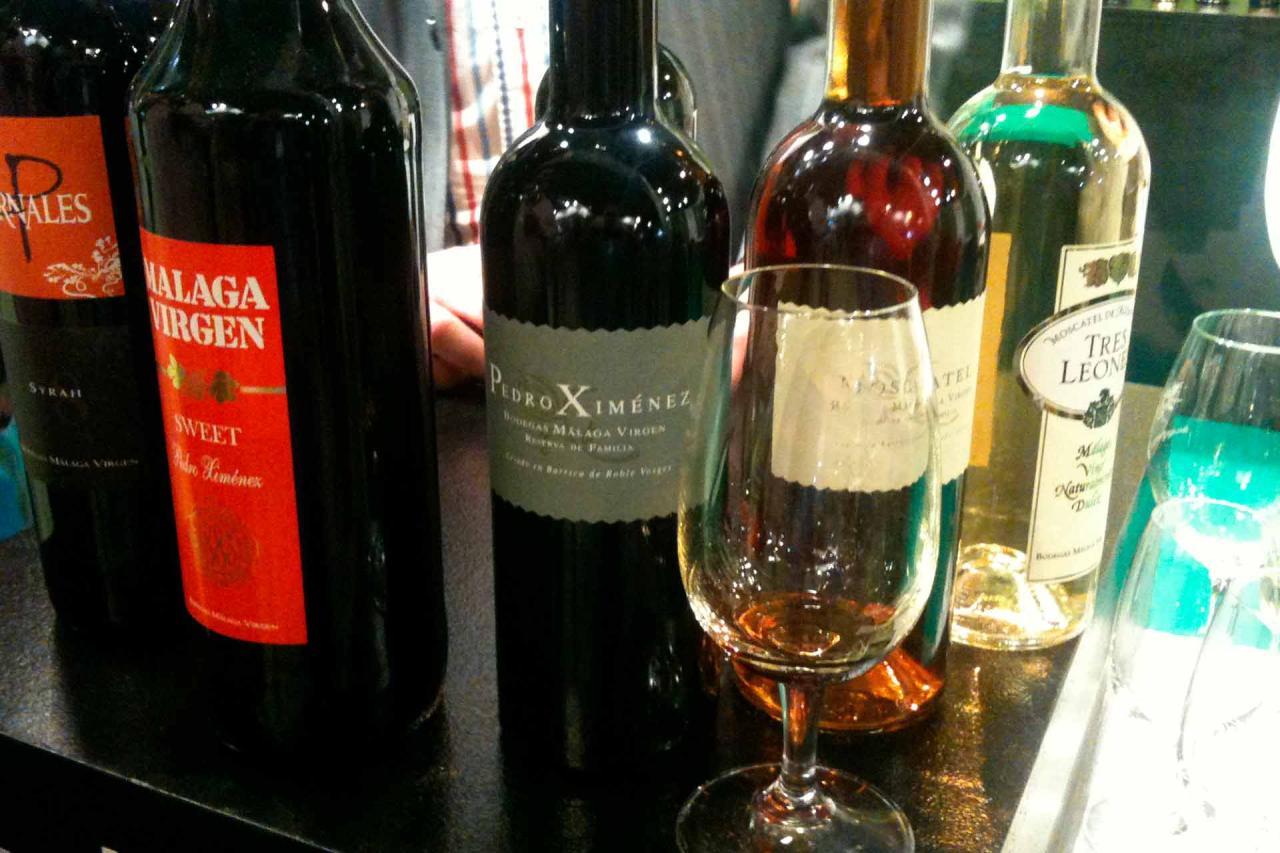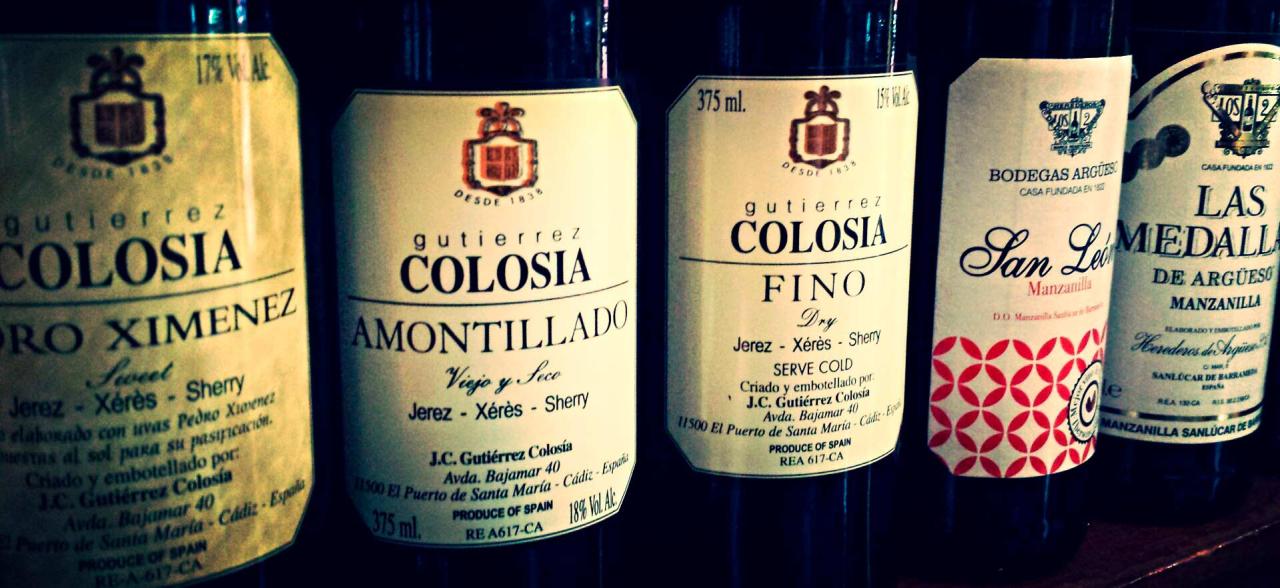Of course, sweet wine is a specialty in the country, and there’s plenty to choose from. Here’s a quick guide to Spanish dessert wines, from the most famous Spanish wines to the best Spanish dessert wines to pair with food.
Different Kinds Of Spanish Dessert Wines
Is Spanish wine sweet? Not all of it: only a few styles have residual sugar. And not all Spanish dessert wines are created equal. Some are fortified, and others are naturally sweet. What is Spanish for sweet wine? “Vino dulce,” so look for the term on the labels. Other than that, sweet Spanish dessert wine can be vastly different. Let’s talk about sweet Spanish wine.
Get updates on the latest posts and more from Wine Bugle straight to your inbox.
Vino de Licor - Liqueur Wine
Liqueur wine is a sweet fortified wine. To make it, producers pick the grapes, press them and allow the grape must to ferment. Still, they’ll stop fermentation by adding distilled grape spirit or brandy to the fermentation tank, effectively killing the yeast and preserving any unfermented sugars in the must.
Vino de Licor has elevated alcoholic warmth and can be extremely sweet; they’re age-worthy too.
Mistela - Mistelle
This specialty might taste and look like sweet wine, but it isn’t. This is fortified, unfermented grape juice, and it’s a lovely apéritif thanks to its unmistakable fruitiness.
The most famous Spanish mistelas come from Tarragona, la Mancha and Valencia, and producers make them with a wide variety of red and white grapes. They’re often made to give good use to surplus grapes in wineries. Finding mistelas on the market is not common, not even in Spain.
Vino Dulce Natural - Natural Sweet Wines
Naturally sweet wines are not all that natural since producers fortify them with brandy or similar spirit. Their sweetness is natural, though, as it comes from the sugar that remains after fortification.
This specialty goes back to at least the 13th century and is not unique to Spain. France has a rich vin doux naturel tradition, like many other European countries.
Vino Generoso de Licor - Generous Liqueur Wine
The term generous is used for any fortified wine. Still, this category comprises wines that haven’t been fortified with grape spirit but with sweet wine or concentrated grape must.
Blending still dry wines with sweet wines is an art form, resulting in incredibly complex wines with various sweetness levels. In Spain, these wines are almost exclusive to Sherry and Malaga, and the technique is used to make Pale Cream, Medium and Cream Sherries.
Vino Naturalmente Dulce - Naturally Sweet Wine
Not to be mistaken with Natural Sweet Wine described above (we know it’s confusing), Naturally Sweet Wine is never fortified. Instead, producers use other (natural) techniques to obtain sugar.
Drying the grapes to achieve a higher sugar concentration, harvesting them late in the season or freezing them are the most common techniques to achieve sweetness. The result is dessert wine at all sweetness levels and not as much alcohol as you’d find in fortified wines.
Vino de Vendimia Tardía - Late harvest Wine
Late harvest wines are nothing new, and they’re relatively common in Spain. To make this sweet wine, producers let the fruit hang on the vine until it shrivels. The grapes lose moisture, but their acid and sugar remain intact.
Press the shriveled grapes, and you get sweet must ideal to make dessert wine with little intervention. This is perhaps the most common type of sweet wine in the world.
Vino de Uvas Sobremaduradas - Wine Made with Over-ripe Grapes
Although not dissimilar to late harvest wines, this category is slightly different. Instead of picking the grapes late, producers might pick them and let them desiccate in a controlled environment, in the winery, and not in the vineyard. Drying the grapes under the country’s blistering sun is not uncommon either.
Spanish dessert wines in this category often come from the warmest and sunniest regions, mainly in Andalucía and la Mancha.
Vino de Hielo - Ice Wine
This specialty is only possible in the world’s coldest vineyards. In Spain, small regions have managed to produce such delicacy, mainly in Calatayud.
To make this wine, the grape growers leave the grapes to hang on the vine until the first winter frosts. They’ll pick the grapes when the fruit is rock solid and press it to separate their sweet juice from the ice shards, resulting in overly sweet grape must.
Sweet Sparkling Wines
Sparkling wine is a big deal in Spain, especially Cava, the country’s answer to Champagne. And just like Champagne, Cava comes in various sweetness levels.
European law standardizes residual sugar in sparkling wine, ensuring every sparkling wine, despite its origin, is adequately labeled according to its sweetness. You’ll notice sweetness in sparkling wines labeled Extra Seco, Seco, Semi Seco and Dulce. Brut and Extra Brut are always dry.

Malaga
Malaga is an exciting wine region in Andalucía that, although it might not be as well-known as neighboring Sherry. Malaga is a reliable source of sweet wine. Created in 1933, the appellation produces sweet wines made with Pedro Ximenez and Moscatel.
The region allows for fortified and sweet; unfortified wines made with over-ripe or dried grapes. Malaga is labeled differently depending on the time spent in oak.
Moscatel
Moscatel is used for wines made with the grape of the same name. Moscatel, AKA Moscato, is not one grape, but many, and experts believe the grape family is one of the oldest still around — they’re known for accumulating massive amounts of sugar.
Moscatel is typical around the Mediterranean Basin, but it is traditional in Malaga, where Muscat of Alexandria is preferred. Moscatel is rarely fortified, as the wine made with sweet grapes commonly has residual sugar.
Pedro Ximenez
Pedro Ximenez is the sweetest wine grape in the Spanish repertoire and is the source of some of the sweetest wines on earth. Often labeled as PX, these wines are made with sun-dried grapes, and they’re rarely fortified.
Given PX’s sweetness, this is one of the most typical wines used to sweeten others in the Vino Generoso de Licor category. The wines are also always very dark.
Lágrima - Tear
Meaning tear, this sweet specialty is typical in Malaga, and it’s made with the sweet Pedro Ximenez. The wine’s name refers to the practice of making it with free-run juice that pours down the dried grapes before pressing as if it were tears.
The free-run juice is incredibly sweet and pure and results in sweet wine that is often aged in barrels for at least two years.

Sherry
Sherry is the most complex wine in the world. There are many types of Sherry, but they’re all fortified. They are also always aged extensively in the region’s famous soleras (a barrel blending system that blends old wines with new wines.) Although all Sherry is fortified wine, it’s not always sweet. In fact, the most popular types of Sherry are bone dry.
Fino
We can’t discuss Sherry without mentioning its most famous style — Fino (and Manzanilla.) Although these wines are Sherry, they’re not sweet at all. In fact, thanks to their unique biological aging under a thin fungal veil, these are the driest wines on the planet.
Fino is also oxidative, so it’s not for everyone — it is an acquired taste. Nevertheless, this fortified dry wine is among Spain’s most famous wines.
Oloroso
Oloroso is a unique type of Sherry fortified to at least 17% ABV to prevent the fungal veil that makes other styles famous (like Fino) from forming. These wines are said to age oxidatively.
Oloroso wines have a deliciously sweet nose redolent of dried fruit and nuts, but on the palate, they are dry. These wines are not dessert wines. In Spain, not all fortified wines fall in the sweet wine category.
Amontillado
Amontillado is a unique Sherry style that combines Fino’s biological aging and Oloroso’s oxidative aging, so it shares traits with both.
To make this style, producers allow the wine to age under a fungal veil, only to be fortified even further to eliminate the veil and finish the wine in Oloroso’s oxidative style. Amontillado is a dry fortified wine and, although sweet on the nose, is completely dry.
Cream
Cream and other types of Sherry, including Pale Cream, Medium, Moscatel and PX, are the only wine styles with residual sugar in Sherry. These are sweet wines.
Cream wines fall in the Generoso de Licor category, so they are sweetened with the addition of sweet wine (Moscatel or PX) or concentrated grape must. After PX and Moscatel, Cream is the sweetest wine in Sherry and one of the most luscious in Spain.
Priorat and Montsant
Priorat is well known in the wine world as a source of robust dry red wines. Along with Rioja, the appellation is the only Spanish wine region that has earned the title of Qualified Denomination of Origin or DOCa.
Neighboring Montsant shares Priorat’s terroir, tradition and grape varieties: Garnacha and Cariñena. Interestingly, both regions produce a now-rare fortified wine. These sweet wines are incredibly sugary and age-worthy, but they’re a hard find.
Navarra
Navarra is a northern Spanish region that has found its place in the wine world by producing modern-cut white and red wines with local and international varietals.
Navarra also produces small amounts of fortified sweet wine and late harvest wines made with Moscatel grapes. Although these wines can be pleasing and are rarely expensive, Navarra is not considered a typical source of Spanish sweet wine. Of course, the region’s rare sweet wines are as enjoyable as all other Spanish dessert wines!
Photo credits

